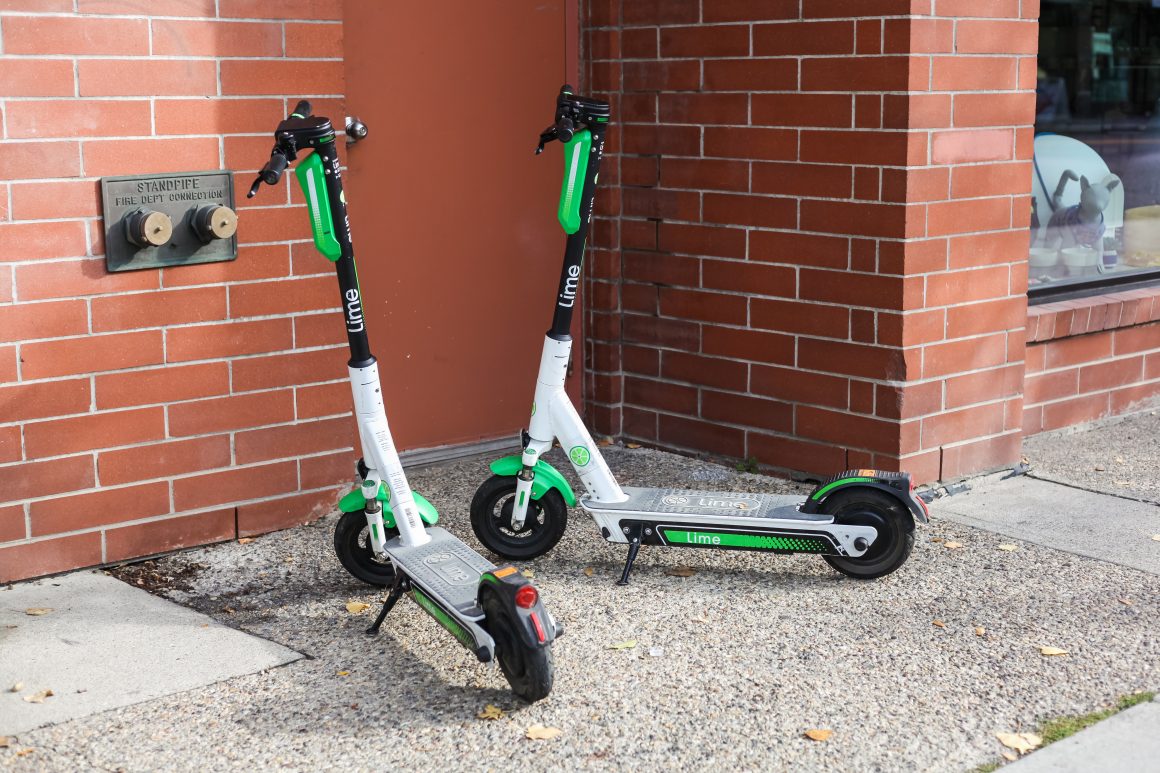
Exposé: U of C’s Underground Electric Scooter Jousting Ring
By Evan Lewis, September 19 2019 —
As the last breath of summer lingers on the evening air, I make my way across campus to a door that rarely sees much traffic. I knock twice, and when the door cracks open, I whisper the word “meringue.” This hushed exchange as dusk falls gains me entry to the University of Calgary’s secret electric scooter jousting club.
These simple vehicles, established and maintained by the companies Bird and Lime, are designed as transport for the “first or last kilometre” of any trip. Most scooters have been placed in downtown Calgary and have seen good activity since their introduction. However, some students have gone to considerable effort to bring these gadgets — capable of going just over 20 kilometres per hour — onto university grounds to use in their anachronistic blood sport.
The small room is lit by a single set of fluorescent lights. Every blind is drawn and closed. Under the pale glow, a pair of figures don odd, patchwork gear. One wears goalie pads and a mask, and handles what looks to be six feet of industrial copper piping. The other hoists a wooden two-by-four onto the handlebars of her Lime scooter and sets an actual medieval greathelm over her head.
The air stinks of beer and burnt rubber. The onlookers, scattered on the edges of the arena, murmur in anticipation. The contestants mount their steeds.
While transporting these scooters from downtown to the university is one difficulty, the suppliers have exacerbated the problem by disallowing any parking of their vehicles on any campus in the city. In order to deal with the drained scooters, a number of volunteers depart after each match to deliver the spent vehicles to the edge of campus. Many of these volunteers are former competitors, with injuries that prevent them from ever competing again.
In an ingenious twist, members of this club have also signed on with Lime and Bird to collect and recharge the scooters, only to return them back to campus borders in the morning. In this way, the jousts constantly run on full tanks and the club maintains some income to offset their operational costs, which are not insignificant. Each scooter costs around $0.35 per minute to run. Each battle, reliant on either the concession or successful de-scootering of an opponent, can last anywhere from seconds to wearying, hour-long slogs in which contestants often only step down when their broken ribs no longer allow them to lift their hands to the handles.
These vehicles are designed to survive outside in the snow and the rain and each can bear up to three hundred pounds, but not one of their designers could have dreamed they would be subjected to this sort of abuse.
An artificial whining can be heard from the wheels as the two opponents rocket towards each other. Their faces are hidden, but their eyes blaze behind their masks. They hit. It’s too quick for me to catch how the greathelmed competitor dodges the heavy copper pipe, but her wooden beam pushes up across the hockey pads and collides solidly with her opponent’s jaw. He is carried a foot backwards by sheer momentum before crumpling. His scooter clatters as it falls to the floor.
“Oh, that’s definitely a break,” someone says behind me. “Maybe just a fracture if he’s lucky. He’ll be back though. The rush is too good to pass up.”
The murmuring of the crowd rises as their warriors shuffle off to the edges of the room, but they quickly hush once more. Each attendee must remain subdued, as any great noise could risk discovery. The sound of the joust itself is all they can afford. Tomorrow night these people will find a new classroom, lecture hall, or theatre, but they must always remain on the move. They must always hide from a university and a world that would not possibly allow or understand this most brutal of sports.
This article is part of our humour section.
